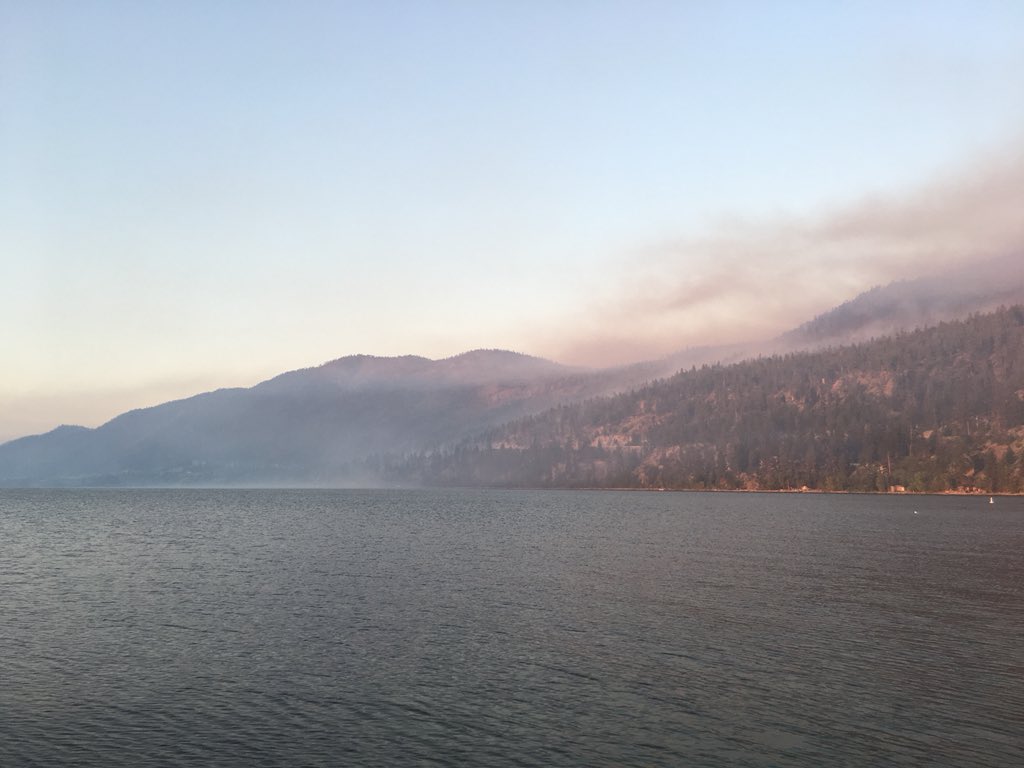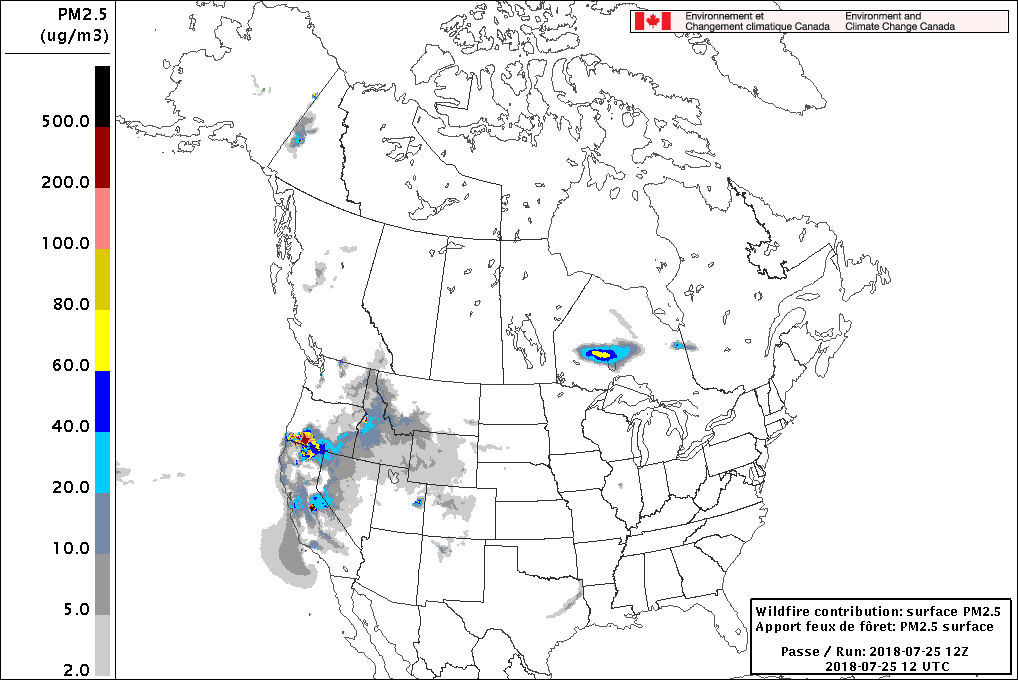More than a dozen regions of British Columbia were under wildfire-related air quality advisories on Wednesday, and the BC Wildfire Service says not all of the smoke is local.

Fire information officer Kyla Fraser said weather patterns are pushing smoke from distant fires high into the atmosphere, some of which is touching down in B.C.
WATCH: Banff prepares for the worst this wildfire season

“It’s all very dependent on wind direction and some other factors such as topography as well,” she said.
“Smoke that’s moving across the country remains in a very high level of the atmosphere, but if changes in weather condition occur, it can suddenly move down to ground level, which is when we start to see that smoke causing local air pollution.”
In the southern regions of B.C., Environment Canada has issued advisories in the South Thompson, Okanagan Valley and East Columbia regions, which Fraser said was likely due to smoke from local fires.
But farther north, where more than a dozen areas – including Prince George and the Peace Region – are facing smoke problems, the culprit is much further away.
“There actually was an upper-low that pulled smoke into B.C. from fires that are currently burning in Manitoba and Ontario,” she said.
You can find an up-to-date map with Environment Canada weather alerts here.
Global B.C. meteorologist Peter Quinlan said most of the south and central Okanagan has been dealing with poor air quality, but that favourable winds have been clearing some smoke from populated areas over the last week.
And he said a system of thunderstorms which brought more than 88 lightning strikes near Kelowna and sparked multiple new fires has passed.
But Quinlan said there are new challenges on the horizon. Breezy conditions are expected to bring wind gusts upwards of 40 to 50 kilometres per hour in the coming days.
And he said temperatures in the Okanagan are on the rise once again.
“Temperatures will climb into the mid-30s by the weekend with no precipitation in the forecast right through into the beginning of August,” said Quinlan.
Quinlan added that a weather pattern known as an “Omega Block” is expected to continue to pump hot air across the province, and could stay in place for weeks.
According to the provincial government, air quality advisories are issued when pollutant concentrations approach or exceed pre-determined limits, or when degraded-air-quality episodes are expected to continue or worsen.
Smoky skies advisories are issued when areas of the province are being impacted or have reasonable potential to be impacted by wildfire smoke within 24 to 48 hours.
The province says the bulletins are based on available pollutant concentrations information, satellite information, smoke forecast models and visual observations.
Individuals may experience symptoms such as increased coughing, throat irritation, headaches or shortness of breath. Children, seniors, and those with cardiovascular or lung disease, such as asthma, are especially at risk.
At-risk groups are advised to stay indoors and use air conditioning where possible. Health authorities also recommend avoiding physical activity, drinking plenty of fluids and monitoring symptoms.
Anyone who is having problems breathing, or notices chest pain or persistent coughing, should contact their healthcare provider.
You can find more information about protecting yourself in smoky conditions here.











Comments